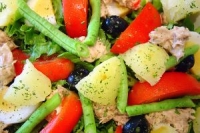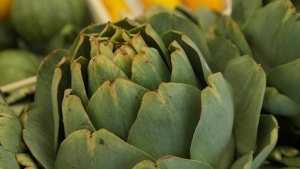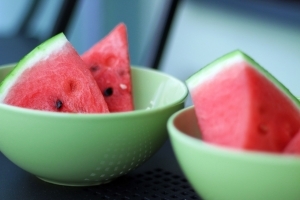Probiotic Gherkins

Probiotic Gherkins Photo: Nicola Galloway
These probiotic gherkins can be eaten after 1 week, however, the microbial goodness increases over time. I try to have a rotation in place with our lacto-fermented produce so we are waiting at least a month before taking our first bite. You will need a 2 litre glass jar. The optional addition of the grape vine leaves helps to retain the crunch of the gherkins.
Ingredients:
- 1kg gherkins
- dill or fennel flower heads
- 1 teaspoon mustard seeds
- 2 tablespoons unrefined salt
- 1 litre cold filtered water
- 2 tablespoons cultured whey*
- 2 grape vine leaves (optional)
Method:
Wash the jar making sure to rinse off any soap thoroughly. Pack the gherkins very snugly into the jar and add the flower heads and mustard seeds.
Make the brine by stirring the salt in the water until it is dissolved. Pour this over the produce to come within 2cm of the top of the jar (if there is extra brine set this aside for topping up the jar later). Pour in the whey and pack the grape vine leaves into the top of the jar. Secure the lid and gently turn (don't shake) the jar to distribute the whey.
Place the jar on a tray (to catch any dribbles) and leave at room temperature for 2 days. The liquid may bubble over a little during the fermentation simply top up with extra brine to within 2cm from the top of the jar.
Once this initial fermentation has taken place store the pickles in the fridge or a cool store cupboard (5 - 8C) . Wait at least 1 week before eating and consume within 6 months.
Notes
*Cultured Whey is the opaque liquid left over from low temperature cheese making. The easiest way to obtain whey if you don’t make cheese is to strain natural unsweetened yogurt or milk kefir through a cheesecloth lined sieve set over a bowl. Over several hours the whey will drip out and the yogurt becomes gorgeously thick and creamy. Keep whey in a glass jar in the fridge and use within 2 weeks.


